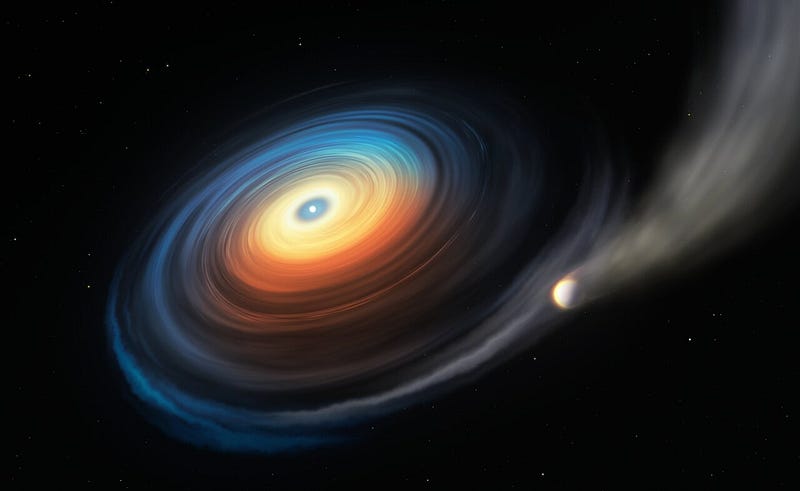Discovering Icy Giants: Exoplanets Around Dying Stars
Written on
Chapter 1: The Quest for Life Beyond Earth
Scientists are continuously exploring the cosmos for other planets that might sustain life similar to our own. As of July, we had surpassed the impressive milestone of discovering over 4,000 exoplanets. A primary factor in assessing whether an exoplanet could support life is its position within the "Goldilocks zone." This is the ideal range from its host star, where temperatures are just right for liquid water to exist.
Despite numerous discoveries in this habitable zone, most exoplanets found so far appear to be barren and rocky, lacking the conditions necessary for life. Recently, a team from the University of Chicago introduced a computer modeling tool named ROCKE-3D. This innovative software simulates rocky exoplanets using parameters derived from ocean circulation, which plays a crucial role in evaluating habitability.
As astronomical techniques evolve, researchers have added new methods for identifying Earth-like exoplanets. One such method examines the light emitted by a planet as it moves behind its host star and re-emerges. By comparing the light before and after this passage, scientists can infer the presence of an atmosphere based on whether any light was absorbed.
With these refined techniques guiding the search for an "Earth 2.0," astronomers at the University of Warwick, UK, made a fascinating discovery—a massive icy planet orbiting a white dwarf star. This finding emerged from the analysis of 7,000 white dwarfs cataloged by the Sloan Digital Sky Survey. White dwarfs are the remnants of sun-like stars that have exhausted their hydrogen fuel.

Chapter 2: The Unusual Exoplanet
“Historically, few astronomers have considered the fate of planets around dying stars. This recent discovery starkly illustrates the universe's ability to push us beyond our preconceived notions.” ~ Researcher Boris Gänsicke
The newly identified exoplanet stands out from others. It seems to have endured the red giant phase of its star, during which a dying star expands and can consume nearby planets. Now, this planet orbits the white dwarf star WDJ0914+1914. Utilizing the X-shooter instrument at ESO's Very Large Telescope in the Atacama Desert, the research team analyzed the star's light signature, uncovering unexpected traces of hydrogen, oxygen, and sulfur—elements typically found in the icy atmospheres of planets like Uranus and Neptune.
The astronomers from the UK, Chile, and Germany drew intriguing conclusions from their theoretical models and the observed data. The white dwarf is five times hotter than our sun, reaching around 28,000 degrees Celsius, while the surrounding icy exoplanet is twice the size of the star. This planet orbits a mere 10 million kilometers (about 6 million miles) from the white dwarf, completing a full orbit in just 10 days. At such proximity, the intense heat of the white dwarf strips away atmospheric gases at a staggering rate of 3,000 tonnes per second, forming a swirling disc of material being drawn into the star.
This unusual arrangement of an icy exoplanet so close to a white dwarf can be attributed to its gravitational interactions with other planets, which likely caused it to migrate inward as its host star transitioned to a white dwarf. The study suggests that another planet may have survived this transformation and could be lurking in the distant reaches of this solar system.
The discovery of this exoplanet around WDJ0914+1914, located approximately 1,500 light-years away in the constellation Cancer, not only suggests the potential existence of more icy giants orbiting white dwarfs but also offers insights into the fate of our solar system approximately 5 billion years hence. During that time, our sun will expand into a red giant, potentially engulfing Mercury, Venus, and Earth before collapsing into a white dwarf, leaving the outer gas giants to face a similar fate.
This video explores the JWST's discovery of the coldest, oldest exoplanet ever imaged, providing a deeper understanding of exoplanetary systems.
This video discusses NASA's groundbreaking find of a new Earth-like planet, showcasing the ongoing search for habitable worlds.
Stay updated with the latest discoveries—consider joining my mailing list for more insights.